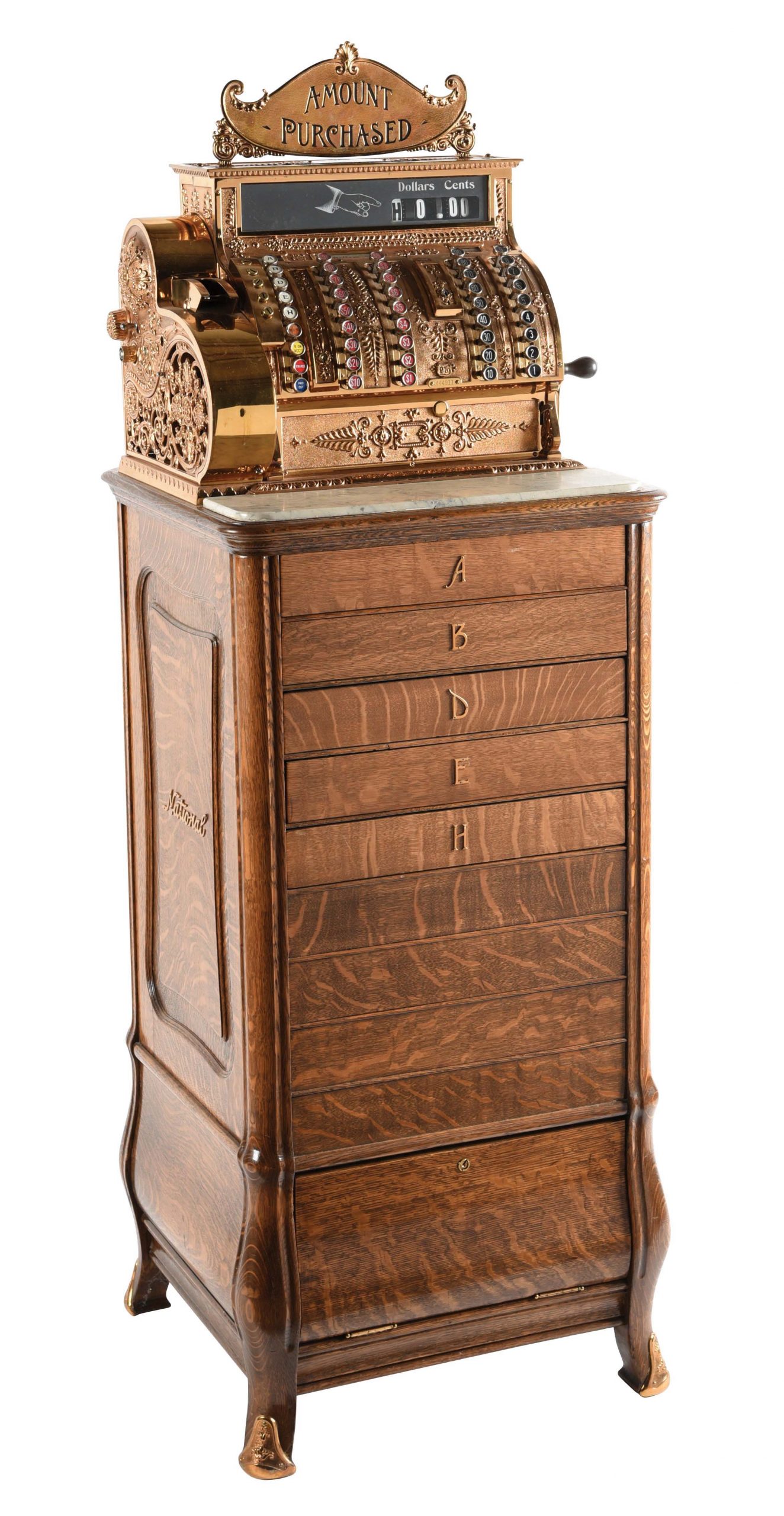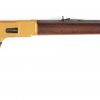With the majority of people now completing transactions with credit and debit cards instead of cash, the focus in the checkout line has shifted from the cash register to the pin pad. Modern-day cash registers are bland, utilitarian machines. If you were asked to describe the last one you saw, you might hesitate and then settle on a large beige or grey contraption with absolutely no character. This wasn’t always the case, though, as evidenced by the wide variety of models available from the historic National Cash Register Company.
Begun in 1879 as the National Manufacturing Company, the Dayton, Ohio-based company focused solely on making the first mechanical cash register. Designed by James Ritty, the new machine was called “Ritty’s Incorruptible Cashier.” James didn’t consider himself an inventor; he was a saloon owner. Despite having a booming business, he noticed that the saloon wasn’t turning a profit. He suspected that his staff was skimming off the top and came up with the idea for the cash register out of necessity.
 By 1884, the company and its patents had been sold to two brothers: John and Frank Patterson. They rebranded the business as National Cash Register Company (NCR).
By 1884, the company and its patents had been sold to two brothers: John and Frank Patterson. They rebranded the business as National Cash Register Company (NCR).
At the time, cash registers were far from common. Patterson and the rest of the NCR staff had to build up the hype around the machines and extol the business benefits to their potential clients. The brand-new idea of a dedicated sales force worked, and by the dawn of the 20th century, the company and its products were on a very firm footing.
By the end of the 1910s, NCR had sold more than one million registers, employed 6,000 people, had bought out 80 smaller competitors, and controlled 95% of the cash register industry in the United States.
Employees of NCR often went on to have very successful careers of their own, due in no small part to the sales tactics they learned from their time with Patterson at NCR. Thomas Watson, Sr. became chairman and CEO of IBM; Charles Kettering helped found Delco and was the head of research for General Motors; Edward Deeds worked with the Wright Brothers on early plane designs and then dominated the post-WWI aircraft market.

Registers were a good business investment, but they weren’t cheap. As such, a flashy register became something to show off and admire. Often highly decorated with scrollwork, some units were made of bronze while others were nickel-plated. Either way, the registers were pretty as well as practical.
As the 20th century progressed, so did NCR. By 1974, they had become a key part in the burgeoning computer industry. To reflect this, the company changed its name from the National Cash Register Company to NCR Corporation. In the 1980s, the company was a serious contender in another cash register-adjacent market: the ATM. Today, their machines make up 1/3 of all ATMs and dispense $18 trillion annually to users.
NCR Corporation hasn’t forgotten its roots. They’re responsible for many of the plain-jane point-of-sale units discussed earlier. Displays, printers, touch screens, terminals, servers, scanners, and self-checkouts are all made by NCR Corporation. Whether these items will ever obtain collectible status will be up to a future generation of collectors to decide.
That said, the early cash registers made by National Cash Register Company are incredibly collectible. In fact, there’s close to 100 of them available in our June 2020 Coin-Op and Advertising auction. There’s also more than two dozen registers from other manufacturers as well. Bronze, nickel-plated, wood veneer, tall and skinny, short and stout, counter top and floor model; you name it, we’ve got it!



